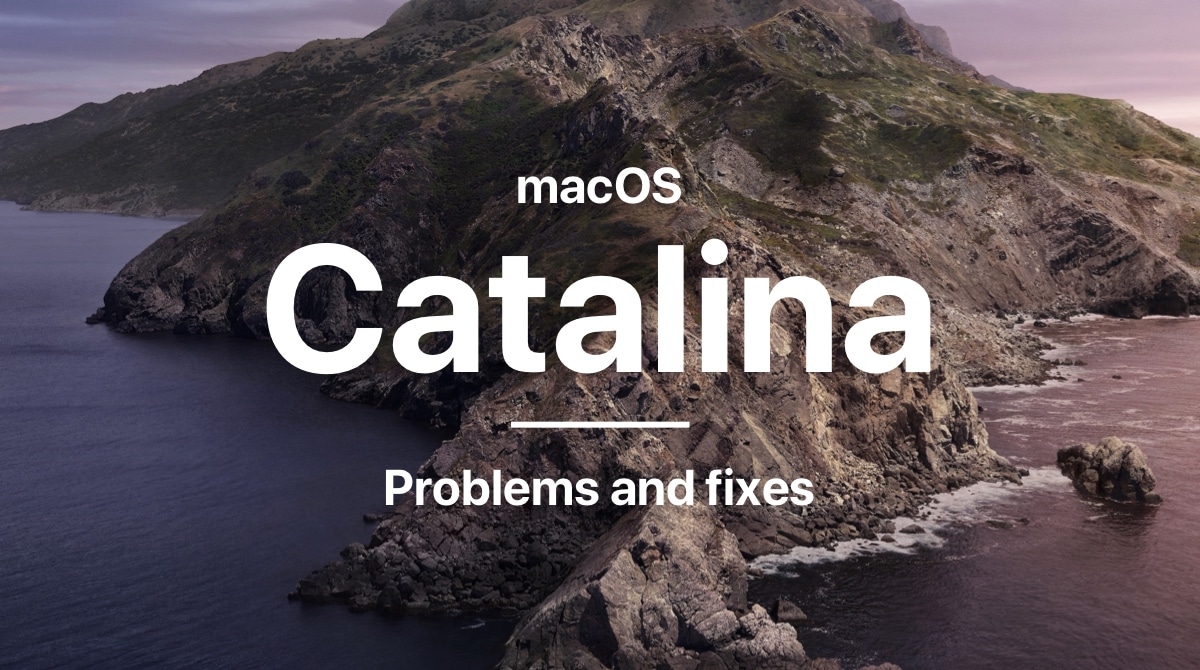

Now that you are familiar with every potential reason that might cause the error occurred while downloading the updates message pop-up when you attempt to update your macOS to the latest version available, let’s take a look at a couple of fixes that other dealing with the same issue have successfully used: Check for a Server Issueīefore you go ahead and follow the other methods below to troubleshoot a local issue that’s causing the update failed error, you should start by ensuring that Apple is not currently experiencing issues with their Software Update delivery function. In this case, you will need to clear the software update catalog first before attempting to install the pending update once again.
Corrupted Software Update Catalog – MacOS Catalina and older versions might suffer from a glitch that affects the Software Update Catalog and ‘convinces’ your system that it doesn’t actually need the pending update. In this case, you’ll need to start by cleaning the caches folder before retrying the update. Corrupted OS-related temporary files – Corrupted remnants from a previous attempt at installing the system OS version might interfere with any new attempts at making the leap to Big Sur. If this scenario is applicable, you should be able to fix the issue by removing the problematic iTunes entry from the hosts file manually. Corrupted iTunes entry in the /hosts file – As it turns out, there are certain situations where your /etc/hosts file might become unusable due to a corrupted iTunes entry and interfere with the installation of a pending system update. Several users dealing with the same problem have reported that they finally managed to get the issue fixed after resetting both of these caches. An issue with PRAM or NVRAM caches – Another scenario that might prevent your system from installing a pending system update is an issue with the NVRAM or PRAM caches. To avoid this particular issue, you’ll need to uninstall kernel extension software like Parallels, CPU Gadget, or Little Snitch before attempting to install the pending update once again. A Conflict caused by 3rd party kernel extension software – According to a lot of affected users, there are several 3rd party tools that might cause this error due to the fact that they interact with the kernel. If the problem is related to an IP or TCP data inconsistency, you should be able to get the issue resolved by restarting or resetting your router. Network inconsistency – A network glitch can also interfere with your attempts at installing the latest system update for your macOS computer. If this scenario is applicable, the only thing you can do is identify the server issue and wait for Apple to fix the issue on their side. Apple Server issue – As it turns out, you can expect to face this issue if Apple is currently dealing with an issue in regards to the Software Update delivery infrastructure. Once the download is complete, you will have the complete setup file for macOS Catalina available on your Mac. Click Continue to start the download process.ĭepending on your Internet connection speed, the download might take some time. The next screen will tell you that the download size will be around 7GB and the file will be saved in your Downloads folder. This app also lets you install macOS Catalina on unsupported Macs, but that’s a topic for another day. 
Once you reach the below screen, click on Download a Copy.This should only be used if you're downloading macOS Catalina to use it on an unsupported Mac model. In the file menu, go to Options and uncheck the option which says 'Auto-apply Post Install Patches'. Run the app again, and you will see the following screen.Note that you will have to run the app at least once, otherwise the ‘ Open Anyway’ button will not appear.

Simply go to System Preferences > Security & Privacy and look for the ‘Open Anyway‘ button to allow the app to run. This is because the app does not have any developer verification data for macOS to recognize it. Once you download the app and run it, you will see the below error message.Download the latest version of the app from here.Here is how you can use this app to get a copy of macOS Catalina. Luckily, there is a utility called macOS Catalina Patcher, which lets you download the complete setup file from Apple’s servers. If you want to archive the installer file for later use, or use it to create a bootable USB drive, this file might not be sufficient. This means that what you download as an update might not always be the full installer. But, the size of these updates varies based on your Mac. It may seem quite simple to download an update for macOS by going to System Preferences > Software Update.







 0 kommentar(er)
0 kommentar(er)
